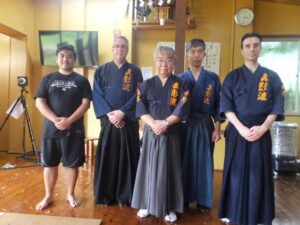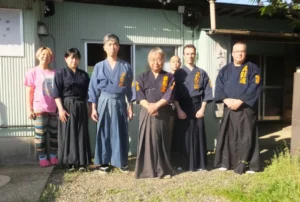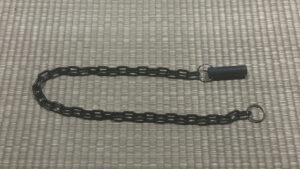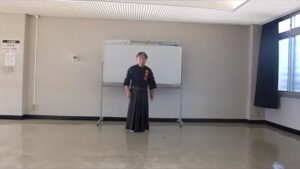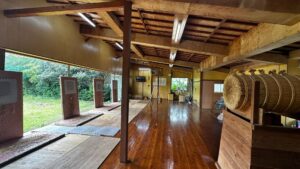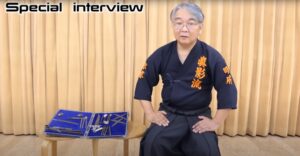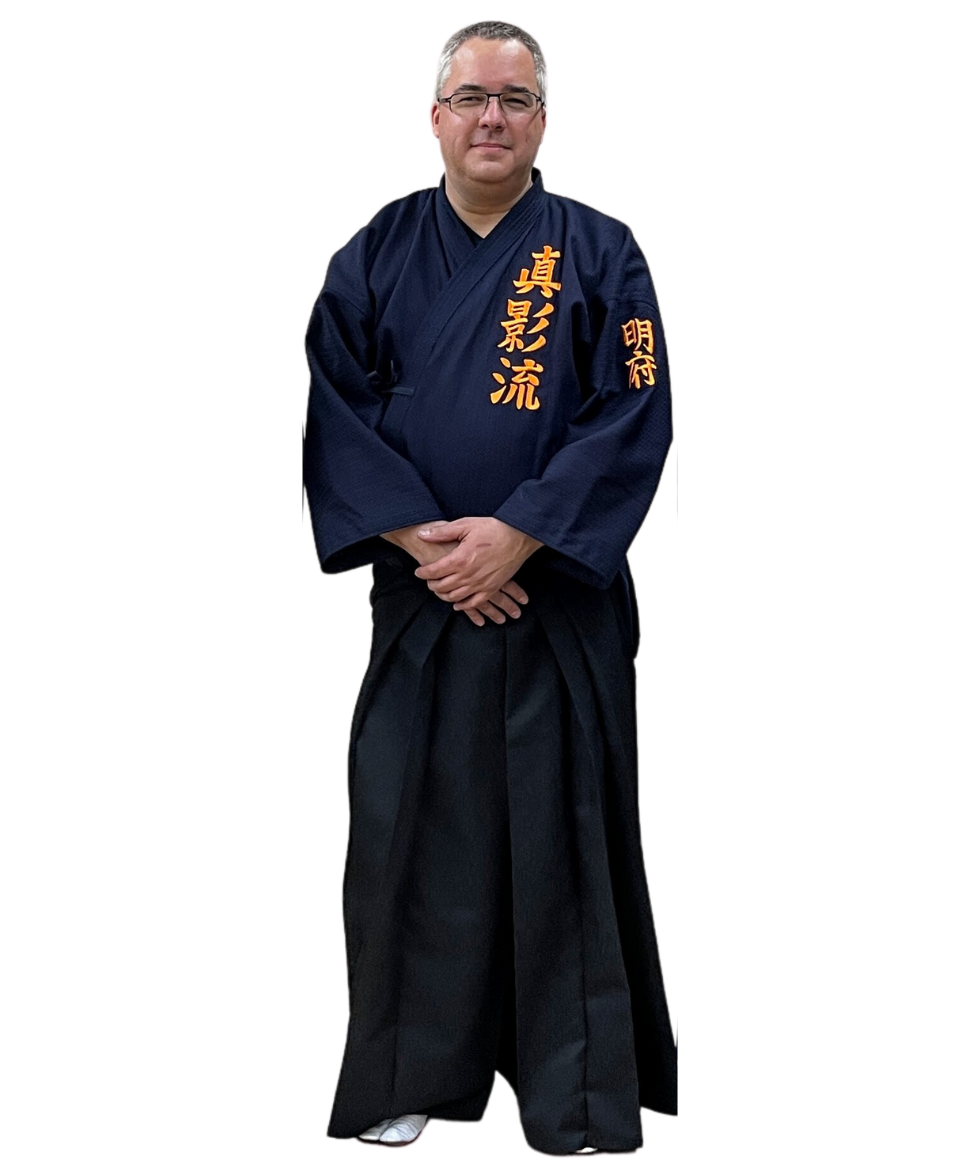The fundo kusari, a flexible chain weapon, holds a prominent place in traditional Japanese martial arts, particularly within Meifu Shinkage Ryū. This deceptively simple yet versatile weapon captivates martial artists, historians, and enthusiasts alike. In this article, we will explore the fundo kusari's origins, design, training methods, applications, and cultural significance in modern martial arts.
Historical Origins
Meifu Shinkage Ryū was founded in the mid-20th century by Someya Chikatoshi, who sought to preserve and refine specialized martial skills. The school draws from older traditions, such as Shinkage Ryū and Shirai-ryū, emphasizing the use of shuriken (throwing blades) and chain weapons, including the fundo kusari.
The fundo kusari has historical roots linked to the manrikigusari, a chain weapon associated with Masaki-ryū. Legend has it that Masaki Tarodayu, an Edo period figure, invented the manrikigusari as a non-lethal means of subduing opponents. This compact chain could be easily concealed and used to entangle an adversary's weapon or limbs. Over time, various ryū developed their interpretations of the chain weapon, each adopting specific techniques and applications.
By the time Meifu Shinkage Ryū emerged, chain-weapon techniques were well established in Japanese martial arts. Today, practitioners of Meifu Shinkage Ryū honor this heritage while adapting these skills for contemporary practice.
Design and Variations of the Fundo Kusari
In Meifu Shinkage Ryū, the fundo kusari typically measures about 70 centimetres (approximately 28 inches) in length. One end of the chain features a weight, known as a fundō, which is cylindrical, and a ring on the other end of the chain. Traditionally made from steel, modern versions may utilize various alloys or padded training chains for enhanced safety.
One of the fundo kusari's key advantages is its concealability. Tucking a 70cm chain into a robe or sash is relatively easy, making it an ideal self-defence tool for historical civilians and law enforcers. Today, practitioners appreciate its portability, allowing for convenient storage in a dojo bag while remaining mindful of local laws regarding weapon possession.
Prohibited Weapon Status in Canada
In Canada, the fundo kusari is classified as a prohibited weapon under federal firearms legislation. This regulation restricts the ownership and carry of specific martial arts weapons due to concerns over public safety. As a result, practitioners in Canada must navigate legal restrictions carefully, often limiting their use of the fundo kusari to controlled environments such as dojos where training is conducted safely and responsibly.
To comply with these regulations while still engaging in training, many practitioners choose to use a safety version of the fundo kusari. These training versions are designed to minimize the risk of injury and are typically made from padded materials or flexible components, allowing for realistic practice without the dangers associated with traditional metal chains. By utilizing a safety fundo kusari, practitioners can explore and develop their skills while adhering to safety standards and legal requirements, thus maintaining the integrity of their training within the framework of Canadian law.
Principles of Meifu Shinkage Ryū
In Meifu Shinkage Ryū, practicality is paramount. Techniques must be effective under real-life conditions. While historically focused on self-defence and survival, modern practice emphasizes skill refinement, cultural preservation, and personal development. Key principles include maximizing efficiency through precise timing, angle management, and minimal energy expenditure.
Controlling space is crucial, as the chain's length allows a practitioner to maintain a safe distance while launching attacks. Proper footwork, body alignment, and the ability to anticipate an opponent's moves are essential skills. Rather than relying on brute strength, practitioners learn to create subtle arcs and angles with the chain to exploit momentum, embodying the flexibility inherent in Meifu Shinkage Ryū.
Discipline and focus are also central to training. Practitioners cultivate a keen awareness of their movements, minimizing the risk of self-injury. Through repetitive drills, they develop muscle memory and instincts that enable them to respond fluidly to changing circumstances.
Fundamental Training Methods
Training with the fundo kusari begins with basic movement drills that familiarize practitioners with the weapon and reduce the risk of injury. Beginners often use a training version of the fundo kusari, which may feature softer weights or shorter segments of chain.
Key drills involve simple swings at various angles: horizontal, diagonal, and figure-eight. As students progress, they incorporate footwork and body movement to enhance coordination and rhythm. Breathing techniques also play a role, helping practitioners maintain focus and control during practice.
Partner work is crucial for developing defensive skills. Two-person drills allow students to practice deflecting attacks and gauging distance. While the fundo kusari excels at striking and controlling distance, Meifu Shinkage Ryū does not focus on entangling techniques, setting it apart from other schools. This distinction reinforces the style's emphasis on efficient striking and defensive maneuvers.
Applications and Tactics
The fundo kusari serves three primary applications: striking, defending, and controlling distance. A well-timed swing can deliver a blunt force strike to an opponent's torso, arms, or legs, potentially stunning them without lethal intent. The chain's ability to build momentum quickly allows practitioners to pressure opponents while maintaining a safe distance.
Defensively, the swinging chain acts as a barrier, making it difficult for attackers to close in. Practitioners learn to use circular motions to parry or intercept incoming strikes, emphasizing the importance of timing and footwork. Advanced training focuses on speed, precision, and effective targeting, ensuring that practitioners can respond adeptly to various scenarios.
Unlike some traditional schools that incorporate entangling techniques, Meifu Shinkage Ryū prioritizes direct confrontation and evasion. This approach allows practitioners to develop a clear understanding of distance management and timing, creating a streamlined and efficient combat style.
Cultural and Philosophical Dimensions
Meifu Shinkage Ryū embodies cultural and philosophical elements that enrich the practice of the fundo kusari. The weapon serves as a tool for self-cultivation, encouraging students to adopt disciplined mindsets and approach training with humility and respect. Through consistent practice, students develop patience, perseverance, and attention to detail—qualities that extend beyond the dojo and into everyday life.
The fundo kusari’s unpredictable nature mirrors broader lessons about adaptability. Practitioners learn to remain calm under pressure, cultivating critical thinking skills that can be applied in various situations. Continuous self-reflection is encouraged, allowing individuals to identify strengths and weaknesses while promoting personal growth.
The sense of community within Meifu Shinkage Ryū also fosters lasting bonds among practitioners. Training together creates a supportive environment where shared experiences contribute to mutual respect and camaraderie.
The Future of the Fundo Kusari and Meifu Shinkage Ryū
Looking ahead, the fundo kusari and its place within Meifu Shinkage Ryū will likely continue to evolve. As interest in traditional martial arts grows worldwide, the fundo kusari can inspire new interpretations and adaptations. Cross-training with other martial arts can provide fresh perspectives while enriching practitioners' skills.
Online learning platforms have made it easier for martial artists to connect and share knowledge, ensuring that the teachings of Meifu Shinkage Ryū remain accessible to future generations. This digital era fosters a global community eager to learn from one another, broadening the reach of traditional practices. Currently, two MSR teachers have been authorized to teach MSR online, Marco Pilato-Shihan, and Chris de Feijter-Shihan Dai.
As practitioners strive to preserve the cultural heritage of the fundo kusari, they contribute to its legacy. Engaging in storytelling, demonstrations, and cultural events will help keep the history of this remarkable weapon alive for years to come.
Conclusion
The fundo kusari embodies a rich history, philosophy, and practical application within Meifu Shinkage Ryū. From its origins linked to the manrikigusari of Masaki-ryū to its modern interpretations, the fundo kusari invites practitioners to explore martial arts' depths while fostering personal growth and community connection.
As students engage with this unique weapon, they gain insights that transcend the dojo, promoting mindfulness, discipline, and adaptability in everyday life. By embracing the lessons of the fundo kusari, practitioners honor its legacy and cultivate a brighter future, ensuring that tradition and innovation harmoniously coexist.
Ultimately, the fundo kusari serves as more than just a weapon; it is a medium for self-discovery and cultural preservation. As its story unfolds, the fundo kusari will continue to inspire generations of martial artists, ensuring that its legacy endures across centuries and cultures.

